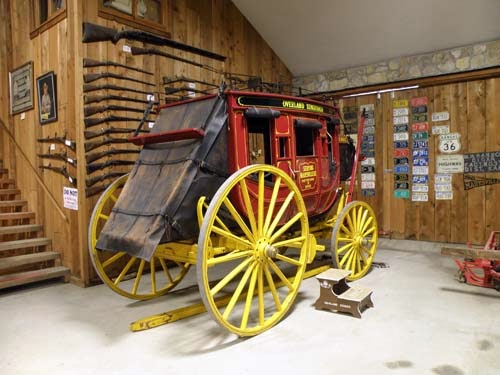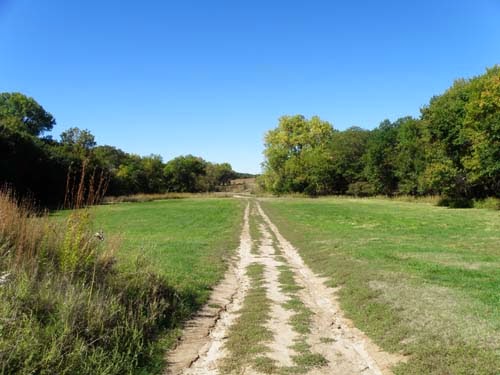Saturday, Oct. 12 to Tues., Oct. 15
We spent four nights in the Independence/Kansas City area
but not all days by choice. Saturday,
October 12, we started off the morning at the National Frontier Trails Museum in Independence. The museum was built by the State of Missouri with a portion of the Waggoner-Gages Mill incorporated into the building. The old mill's locker room is now the national headquarters of the Oregon-California Trails Association. The museum tells the story of the exploration, acquisition, and settlement of the American West. As usual we liked closely inspecting the wagons.
Close to the Trails Center we walked a grassy block with
swale remnants from the Santa Fe Trail.
After driving around Independence
looking at the old buildings and historic sites we drove out of town to a Civil
War battlefield.
We finished the
afternoon with a visit to Fort Osage established in 1808 on the Missouri
River. It was the second U.S. outpost built following the Louisiana Purchase. In 1804 Lewis and Clark located the site as a likely place for a fort. A reconstruction of the fort overlooks the Missouri River just as it did originally.
After leaving Fort Osage the engine light on our truck came
on again. This had been happening for
several days. Glen would clear it and a
few miles down the road it would come on again.
There were no rental cars in the Kansas City area because of a football
game so we spent all day Sunday hanging out in the RV park.
Early Monday morning we took the truck to the
dealer in Independence and rented a car.
I had been looking forward to seeing the Steamboat Arabia Museum as the
story of the Arabia has always fascinated me.
This was my favorite museum of the whole trip because everything there
is from 1856. These are items that
would have been used by the emigrants, no question about it.
The Steamboat Arabia sank in the Missouri River in 1856. When found in 1988 it was a quarter mile from the river and 46 feet underground. When recovered the artifacts were remarkably preserved. Over 200 tons of cargo were recovered and there are still 60 tons to be cleaned, preserved and cataloged.
The truck was an easy fix and we picked it up later in the
afternoon. Our son in law’s sister is a
student at the college in Marshall, Missouri, east of Independence, so we drove
there to visit her.
Our plans included a Passport in Time http://www.passportintime.com/ archaeology project in
Arizona on the way home. We learned
right after the government was shut down that it was cancelled unless the
government reopened. After much discussion we decided to start for Arizona,
visiting friends in Oklahoma on the way, and hoping that the government would
reopen in time for our project to take place on time.
So we are headed home, one way or another. This has been one of the longest trips we've
taken in our little trailer. We wondered
how the three of us, including Chloe, would fair in tight quarters for an
extended period of time. We have had a great
time and we still love our little trailer.
We have even been thinking about an even longer trip in the future.
Oct. 18th- The shut down ended and we start our PIT project on Monday.

























